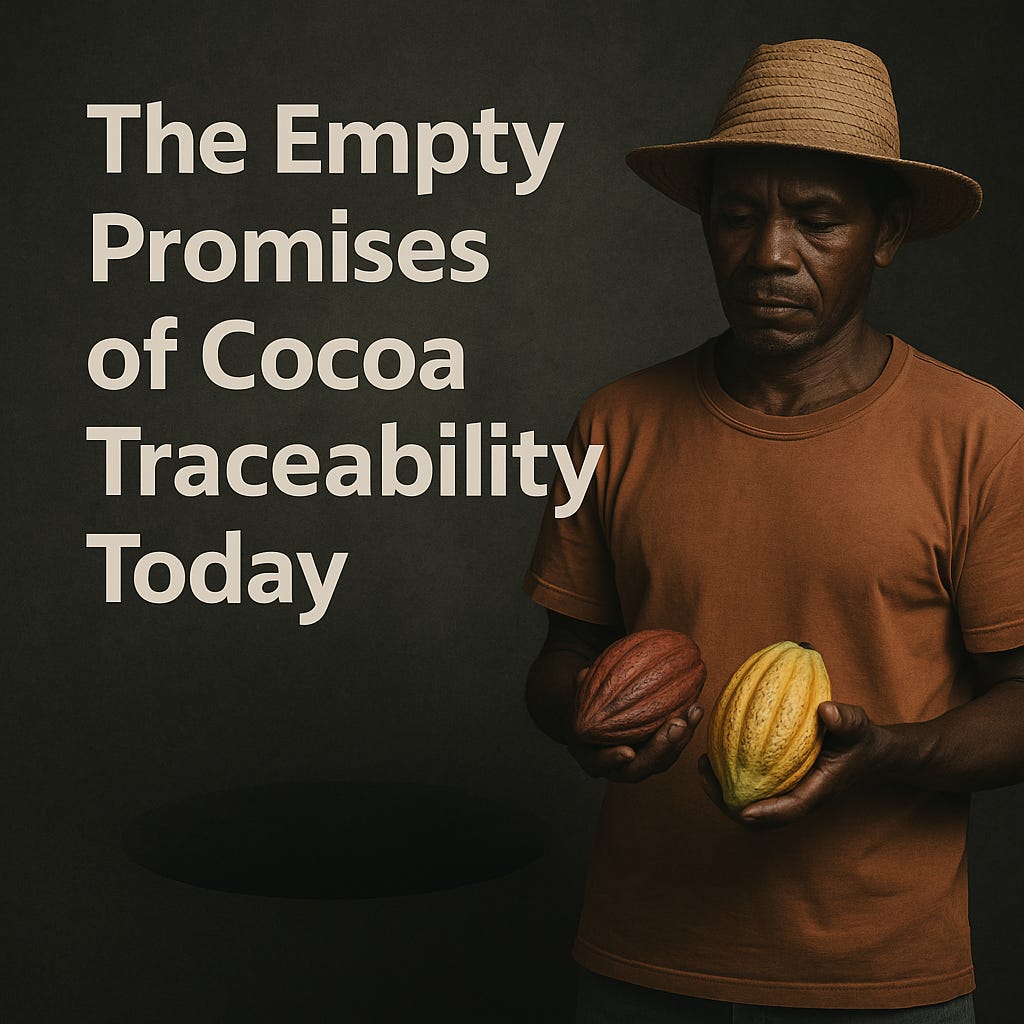The Empty Promises of Cocoa Traceability Today
Continuing on from Part One of our Cocoa Transparency system
“In a village in the western region of Ghana, a cocoa farmer named Kwaku Adorsi watches as a freshly filled jute sack of cocoa beans is tagged with a barcode and entered into a smartphone app by a cooperative clerk. The clerk smiles and assures him, “Now they will know this cocoa is yours.” A few miles away, across the border in Côte d’Ivoire, a government worker hands a laminated ID card to a cocoa farming family, complete with a unique number and QR code. “Without this, you cannot sell to the big buyers soon,” she warns.
These scenes are becoming common across West Africa. The apparatus of traceability – barcodes, ID cards, GPS maps, blockchain ledgers – is being rolled out with great fanfare. Companies and governments trumpet their new systems that can track cocoa from farm to factory. But on the ground, farmers wonder: Will any of this put more food on our tables? Is this traceability drive a genuine game-changer or just an elaborate paper trail to appease distant regulators and consumers?
Traceability today is often discussed in the language of technology and logistics. We hear about satellites mapping cocoa plots, databases assigning each farmer a code, and digital platforms monitoring cocoa movements. Indeed, major industry players have invested heavily in such tools. Cargill, one of the world’s largest cocoa traders, proudly reports that it can trace every individual bag of cocoa in its direct supply chain in Ghana – farmers deliver their beans to community warehouses where they are weighed and tagged with unique barcodes, enabling Cargill to follow each bag back to the originating farm. The company even shifted to paying farmers via mobile money, linking payments to those traceable deliveries. This is hi-tech wizardry compared to the old ways of scribbled ledger books and anonymous bulk shipments. Other giants boast similar achievements: Olam (now ofi) claims it has 100% traceability for the cocoa it directly sources globally, Mars says it has GPS-mapped over half its supplier farms, and Hershey and Nestlé talk up their traceability dashboards tracking cocoa from hundreds of thousands of farmers. On paper, it appears nothing that happens on a cocoa farm today can escape notice.
And yet, the lived reality of farmers like Kwaku remains largely unchanged. After the cooperative clerk in Ghana scans Kwaku’s barcode, Kwaku still goes home with the same government-set cocoa price he’d get without any traceability system. The technology has made his cocoa
Keep reading with a 7-day free trial
Subscribe to Cocoa Diaries Newsletter to keep reading this post and get 7 days of free access to the full post archives.


